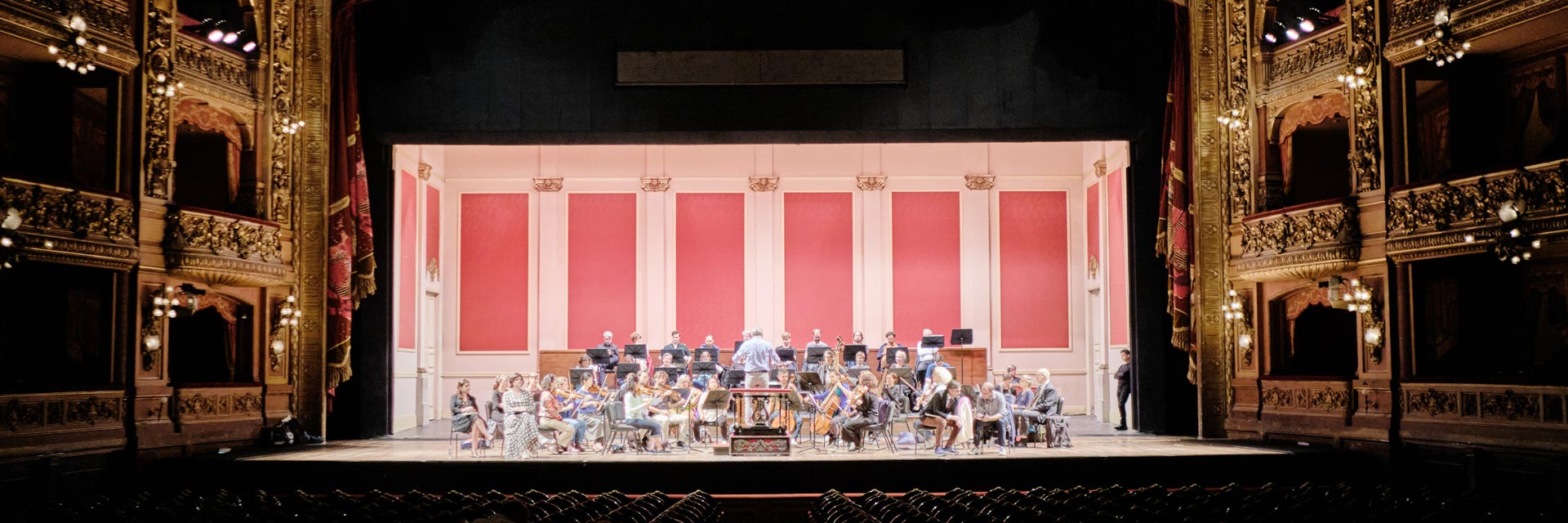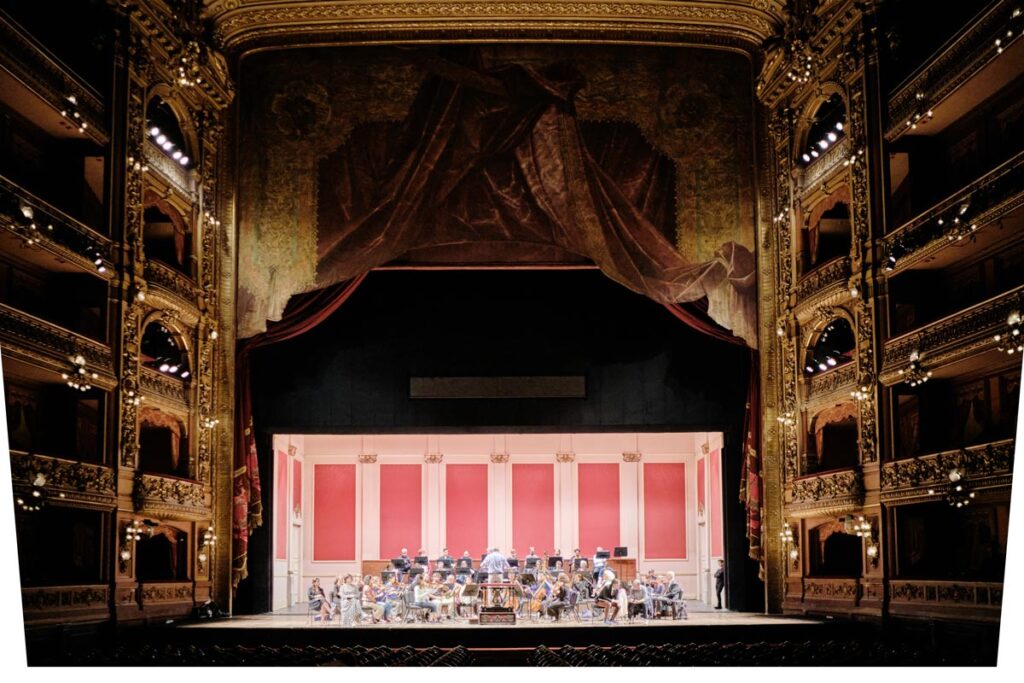For Wilhelm Furtwängler, the matter was clear.
He considered the Teatro Colón, which opened in 1908, to be the most beautiful and best opera house in the world. The modern traveler will be very likely to agree: as you stroll down Avenida 9 de Julio from the hotel, this mighty theater stands out among all the modern office buildings and towers like a relic from a past, which must have been a glamorous one, judging by the beauty of the building. The main entrance is hidden on the Plaza Lavalle side and is often confused with the opulent artist’s entrance on the main street side. The reason is simple: the boulevard didn’t exist until 30 years after the theater opened.
Inside, the artist’s side is like any old theater: not pleasant. The corridors are long, the dressing rooms narrow and windowless, the stairs slippery and steep, the elevators small and slow. There is a canteen, and that’s the best you can say about it.
Once you step onto the stage, however, all that is forgotten. I would love to describe this moment now so that you can be there, feel it and not just read about it. This unique feeling of standing on a stage that has hosted so many legendary colleagues. To stand in front of the beautiful tiers that disappear into the semi-darkness of the working lights, where music lovers have been experiencing the greatest musicians for decades.
Maria Callas stood here, as did Luciano Pavarotti, Enrico Caruso, Igor Stravinsky and Herbert von Karajan, to name but a few. All of this resonates – it’s hard to pin down, but in a hall like this, the sense of occasion somehow remains, it’s clearly not just any old room. This feeling simultaneously humbles and elevates you to the highest heights. And it carries you through the upcoming concert in a very special way.
The sheer size of the building also makes you feel small: there are 2,500 seats and 1,000 standing places here, and the full house makes for a truly impressive soundscape during the – hopefully frenetic – applause.
However, this applause must first be earned, and this is where the Teatro Colón proves to be a musician’s best friend. While most opera houses are rather dry acoustically so it can feel like the notes drop to the floor to the singers’ feet, the Teatro willingly carries every note to the last row. Empty, it resembles the acoustics of a church, much like the Semperoper, but occupied to capacity it is a dream. I know of absolutely no opera house that puts singers standing on the front third of the stage so consistently front and center above everything else. Singers don’t have to torment their voices here, but are allowed to pay attention to subtleties, economize on power and go to extremes. Colleagues positioned further back still come across well, but the exposure at the front is unique. At the same time, voices are supported with ample richness, nothing ever sounds thin or academic. I will certainly come back again just to hear bel canto in this room. No question about it, our Handel has me hooked.
Music tips – recordings that capture the sound of the venue
There are some more recent recordings on Naxos, for example a Ring I Daniel Barenboim – Live from the Teatro Colón 2000, EMI 7243 5 57416 2 2 is also worth your attention | The old recordings with Maria Callas, Arturo Toscanini and Erich Kleiber will always remain special


